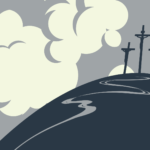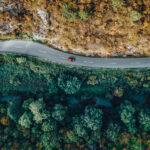Review: A Letter to Layla, Ramona Koval, Text.
Ancient Bones, Madelaine Bohme with Rudiger Braun and Florian Breier, Scribe.
What does the distant past tell us about ourselves, and about our future? Madelaine Bohme is an expert in the field of hominin palaeontology with an ability to explain lucidly complicated science and tell the stories of some Indiana Jones-style detective work, while Ramona Koval, the Australian broadcaster and writer, has an interest in where we’ve come from, and what type of world her grandchildren will inherit, and both of these new books cover the area of what we currently know about early humans and their ancestors.
Bohme upsets a few palaeontological apple carts with her controversial but increasingly likely dismissal of the ‘out of Africa’ thesis of where humans developed. Rather than spreading from Africa like ripples in a pond, the development of human sub-species was likely full of cross-currents. We know now that modern humans contain some Neanderthal DNA, suggesting assimilation rather than simply replacement. Human prehistory is full of migrations and mingling. Koval suggests, if we are thinking of relevance to the present, that this should take some of the wind out of the sails of racists and radical nationalists.
While some, in tracing our species’ lineage, like to emphasise how similar we are to our cousins, the apes, yet both of these books emphasise the differences. As Bohme explains in detail, different physiology makes a huge difference to ability – with our shorter arms, longer legs, toes closer together, arched feet and spinal columns under rather than behind our skulls we can stand upright, and, crucially, run for long distances. (And Bohme writes about how one of the wonders of the human body is how our vision remains stable when we run.)
Once we began to use fire for cooking, which saves time in foraging and delivers more nutrition, we went ahead in leaps and bounds. Intelligence-wise, we left chimps in the dust (or the trees). As Koval puts it, only humans ask why, and study the past. (We speculate on why we speculate.) We can envisage things we can’t see directly, and we can plan. Koval reports on how attempts to teach chimps to point have repeatedly failed, yet babies do it early. We have the capacity to put ourselves in others’ shoes.
While humans may have a rapacious nature, it’s our capacity for cooperation that got us places. Both books point out how island-hopping early humans in South East Asia, as well as requiring the ability to conceptualise sailing to a chosen destination, needed group work to accomplish their travel feats.
Koval also speculates that the human capacity for spirituality (of whatever sort) is one of the key things that separate us from the other animals. Others say art. Koval talks to a French expert on cave art who links the two, and I might add that art, spirituality and group cooperation are all linked, through our unique, extraordinary mastery of language. Being tuned into unseen forces – acknowledging the metaphysical – and expressing that through creative means, is deeply ingrained.
As far as the future goes, Koval talks to those who want to move further away from our ape cousins, and beyond our present human status. She tries to get some sense of where we might be heading by delving into the speculative worlds of AI, cryogenics and transhumanism in America. Frankly, most of the people she talks to sound nuts, and many display a sad self-interest in living longer. Alternatively, as our deep past shows, in our long participation in the spiritual, part of being human is dealing with the natural cycle of life, death and ageing.
For some, there is an optimism that technology can save us, and certainly the use of tools, including fire, has made us human, and the dominant species globally, but this can also be, obviously, destructive. The challenge is how to plan ahead and use our finely developed cooperative natures so that the future is beneficial to all, not the select, privileged few.
Nick Mattiske blogs on books at coburgreviewofbooks.wordpress.com













1 thought on “What our past tells us about our future”
For interesting reading on this subject I would suggest the following books:
by Yuval Noah Harari:
Sapiens – a Brief History of Mankind
Homo Deus – a Brief History of Tomorrow
by Nicholas Wade:
Before the Dawn – Recovering the Lost History of Our Ancestors
The Faith Instinct – How Religion Evolved & Why it Endures
A Troublesome Inheritance – Genes, Race and Human History